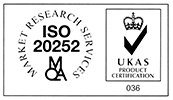HIGH QUALITY DATA COLLECTION SERVICES
IN-HOUSE DATA COLLECTION
We offer all fieldwork methodologies in house, managed by our research experts, providing clients with the highest quality data, including:

Questionnaire Design

Survey Programming & Hosting

Fieldwork

Coding

Translations

Data Processing & Analytics

Statistical Analysis

Dashboarding & Reporting

FACE TO FACE
Full UK coverage, with a team of over 300 interviewers managed by regional supervisors.
- Highly reliable – carefully screen consumer samples
- Total coverage – ability to reach every UK household
- Precise targeting – by region, demographic quotas, etc
- Accurate – interviewer moderated, automated routing
Our CAPI expertise includes:
- Intercepts – in-situ interviews capturing in the moment opinions
- Exit interviews – CSAT, Customer Experience, Campaign Recall
- Central Location Tests (CLT’s/ Hall) – Taste/Product/Concept Tests
- In-Home and Doorstep – Truly ‘Nat-Rep’ samples
- Product Placements / Campaign Awareness – Pre-Post Campaigns targeting specific audiences

ONLINE
Experts in designing clear, engaging, and easy to complete online surveys, using client databases, or our preferred panel providers.
Service Features
- Expert design consultancy
- Full access to over 250 online panels at once
- Secure, GDPR – compliant handling of customer data
- Data in a multitude of formats, inc online portals / dashboards & SPSS / excel.
Our CAWI (computer assisted web interviewing) expertise includes:
- Consumer Surveys (B2C)
- Business to Business Surveys (B2B) & Conjoint
- Customer Satisfaction & Customer Experience (CX)
- Usage and Attitude (U&A) & Brand Tracking

TELEPHONE
Specialists in high quality local and international consumer and B2B CATI interviews, using the ASKIA software platform, enabling raw data to be integrated with our mobile, online, and CAPI surveys.
- Wholly owned CATI centre & industry leading cost solutions
- Experienced interviewing teams across our two telephone centres
- Extensive quality quantitative data checking
- UK and global – in house international of local language interviewers
Comprehensive sample management system
- Maximising response rates
- Recording all calls information
- Booking in appointments by importance
- Control over the most complex of quotas & analyse data on a daily basis
Our CATI expertise includes:
- Consumer Tracker, B2B Hard To Reach & Usage & Awarenest

QUALITATIVE
Our Qualitative Research Team is headed up by Dr. Nick Williams, and Billy Pratt.
Traditional methods include:
- Focus Groups Discussions
- Depth Interviews and IDI’s
- Workshops
- In-home Research
- Accompanied Shops
- Customer & Stakeholder events
- Journey Mapping
Online methods include:
- Video Interviews
- Diaries
- Bulletin Boards
- Vox Pops
- Online Communities



